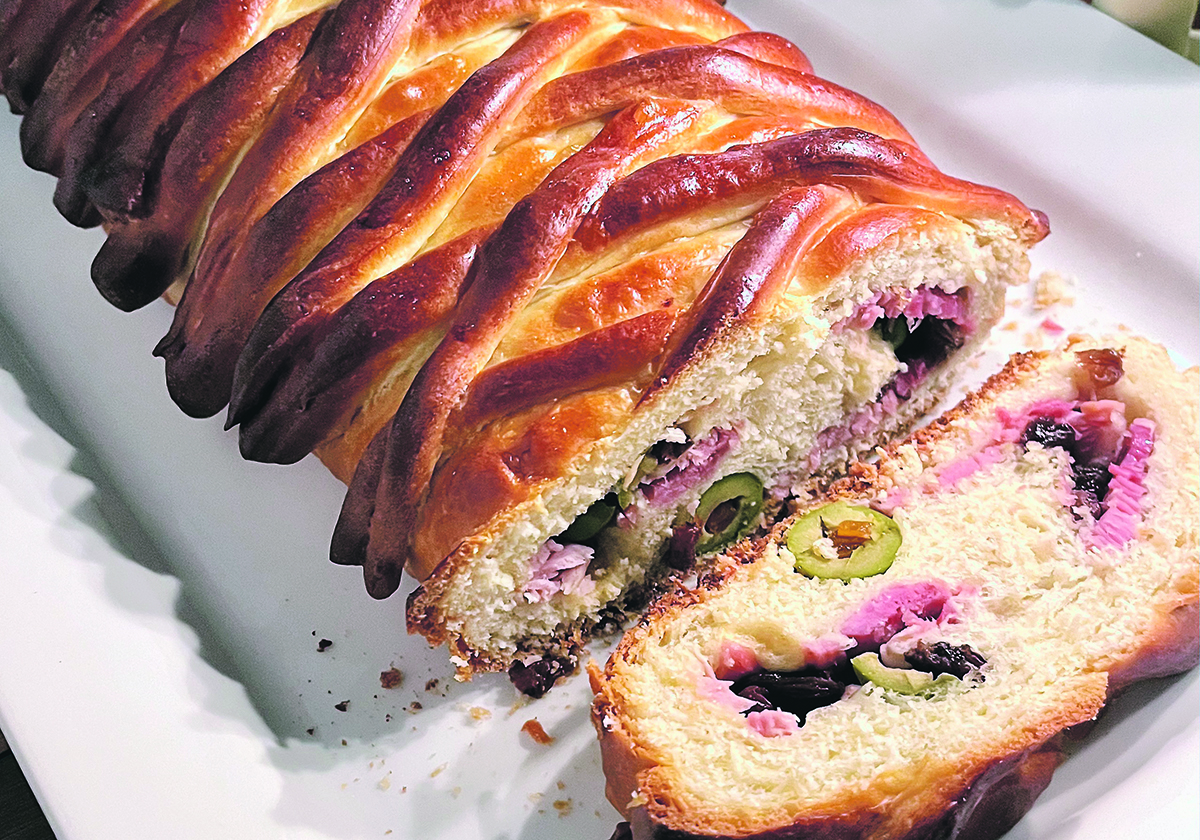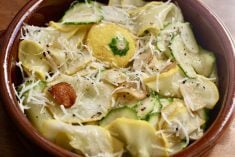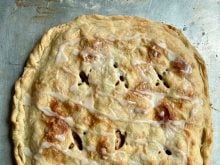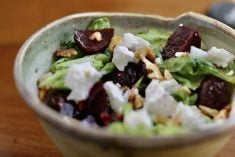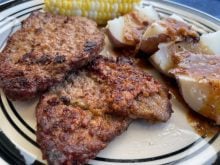The Christmas season is a favourite travel time for many. Traditions and food vary, of course, making it even more interesting.
For example, countries in Europe, Latin America and South Africa have the big feast on Christmas Eve. Serving the big dinner on Christmas Day is mainly a North American tradition.
Oranges at Christmas time are popular around the world. In Canada, the tradition of sharing oranges during the holiday season dates back to the first Japanese immigrants who came to Canada in the late 1800s. It was customary for them to receive packages of Satsuma oranges from their families in Japan to celebrate the New Year.
Read Also

Farm auctions evolve with the times
Times have changed. The number of live, on-farm auctions is seeing a drastic decline in recent years. Today’s younger farmers may actually never experience going to one.
All of these recipes are delicious. I hope you have a chance to try them.
Pan de Jamon (Venezuelan ham bread)
Pan de Jamon is a sweet and savoury Venezuelan bread filled with ham and olives. It is traditionally served Christmas Eve. This is sometimes made with phyllo pastry.
- 1/4 c. water, warmed to 90 F/30 C 60 mL
- 1/4 c. sugar, divided 60 mL
- 1 tbsp. active dry yeast 15 mL
- 3 3/4 – 4 c. all-purpose flour, divided 925 mL – 1 L
- 1 tsp. salt 5 mL
- 3/4 c. milk, warmed to 90 F/30 C 175 mL
- 2 eggs, lightly beaten
- 1/4 c. unsalted butter, melted and cooled 60 mL
- 3/4 lb. ham, deli sliced 375 g
- 1/2 c. raisins 125 mL
- 1 jar pimento stuffed green olives, whole, drained and patted dry
- 1 egg white beaten with 1 tbsp./15 mL water, for egg wash
In the bowl of a stand mixer, add the warm water and one tablespoon (15 mL) sugar until the sugar dissolves. Sprinkle the yeast over top and set aside for five to 10 minutes, until the yeast is softened and slightly foamy. Add milk, beaten eggs and butter. Mix until combined.
Add remaining three tablespoons sugar (45 mL) and salt. Stir to combine. Add three cups (750 mL) flour. Place the bowl in the stand mixer and mix with the dough hook until the flour is completely moistened.
Knead with the dough hook for four to five minutes until the dough is soft and smooth, adding the rest of the flour as necessary to keep the dough from sticking to the sides of the bowl. The dough should be soft but not sticky.
When it has been kneaded enough, place the dough in a clean, greased bowl. Cover it with a damp tea towel and let it rest in a warm, draft-free place until doubled, about one to two hours.
Once the dough has risen, lightly dust countertop with flour and roll the dough out into a rectangle, about a 1/2 inch (1.25 cm) thick and 10×15 inches (25×35 cm) in size. Trim off the edges to make a neat rectangle. Set the trimmings aside to use later.
Cover the dough with the ham slices, arranging them almost to the edges. Sprinkle the raisins and olives over the ham.
Once the fillings have been layered over the dough, tightly roll the dough up from the long edge. Tuck the ends under the roll and place it, seam side down, on a greased baking sheet.
Brush the loaf well with an egg wash of one egg white beaten with one tablespoon (15 mL) water. Roll out the dough trimmings and cut into 1/2 inch (1.25 cm) wide strips. Arrange over the loaf decoratively. Brush generously with egg wash.
Let the dough rise, uncovered, in a warm, draft free place for 45 minutes to one hour, until very puffy.
Near the end of this final rising time, preheat oven to 375 F (190 C).
Bake the bread for 15 to 20 minutes, or until the loaf starts to turn golden brown. Then, loosely tent the bread with aluminum foil to keep it from browning too much and continue baking for an additional 15 minutes. It will bake approximately 30 minutes in total. When finished, the loaf should feel firm when tapped. The internal temperature of the loaf should be 180-190 F (82-88 C).
Remove bread from oven. Let it cool on the pan for 10 to 15 minutes before carefully transferring it to a wire rack. Cool completely before slicing and serving.
The bread will keep in an air tight container in the refrigerator for one week.
Barszcz Czerwony (Polish borscht)
Poland’s Christmas Eve dinner is a meatless meal. This clear soup is traditionally served at this meal. It’s like a beet consommé and is a great vegetarian and vegan choice that everyone will love. It can be served in mugs to drink or in bowls with Polish mushroom-filled pierogi.
- 4 carrots, medium size
- 1 parsnip, medium size
- 1/2 celery root
- 1 leek
- 4 sprigs parsley
- 1/4 c. dried mushrooms 60 mL
- 2 bay leaves
- 4 whole allspice
- 6 beets, medium size
- 1 apple, sliced with the skin
- 3 cloves garlic, peeled
- 2 tbsp. white vinegar, more if needed 30 mL
- 1 tbsp. lemon juice, freshly squeezed 15 mL
- 2 tsp. sugar, more if needed 10 mL
- 1 tbsp. salt, more if needed 15 mL
- 1/4 tsp. dried marjoram or oregano 1.5 mL
- freshly ground pepper, to taste
Place dry mushrooms in a bowl and cover them with hot boiling water. Let them soak for five minutes.
Peel, wash and cut into chunks carrots, parsnip, celery root, leeks and parsley.
Place vegetables and soaked mushrooms with liquid in a large pot and add approximately 10 cups of water. The vegetables should be covered by about an inch of water. Add a tablespoon of salt, bay leaves and allspice, and boil for about 30 minutes, uncovered.
Prepare beets by peeling them and slicing in 1/2 inch (1.25 cm) slices. Peel garlic and core and slice the apple.
Add beets, garlic, apple, salt, sugar and marjoram to the vegetable stock. At this time, add one tablespoon (15 mL) of vinegar and one tablespoon (15 mL) of lemon juice to preserve the colour of the beets. Cook for another half hour, uncovered. Add additional water as needed to keep all the vegetables covered with water.
Strain and discard all the vegetables. Add the remaining vinegar and adjust the seasoning with vinegar, sugar, salt and pepper as needed.
Pour borscht either into mugs to drink or into bowls to be served with mushroom pierogi.
Roast ham
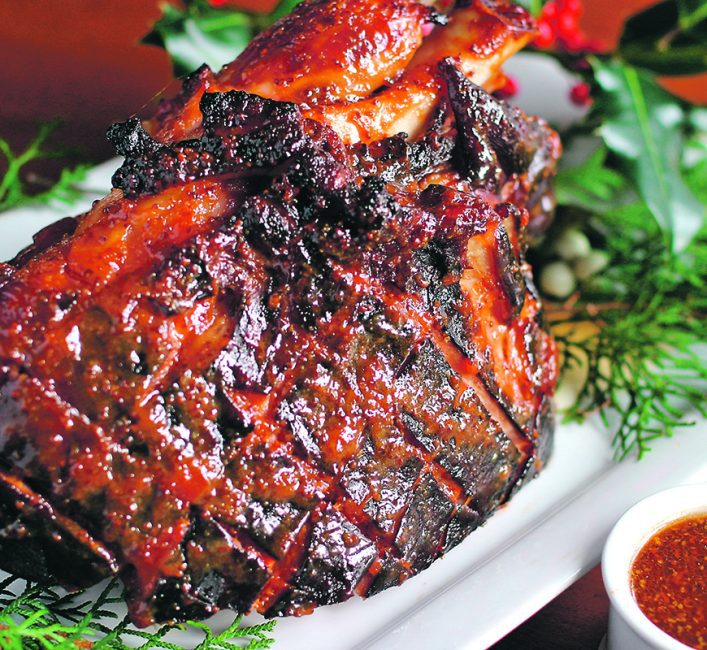
The main feast in Sweden happens on Christmas Eve. It is traditionally a buffet, called a smorgasbord, including cold fish, cold meats, cheese, pickles and salads.
To prepare a ham, the first step is to read the label. Is it fully cooked or uncooked? Most hams in Canada are fully cooked when purchased and only require heating. The goal is to reheat the ham without drying it out.
- 9 – 10 lb. fully cooked bone-in ham, at room temperature 4.5 -5 kg
- 1 c. apricot preserves 250 mL
- 1/4 c. grainy mustard 60 mL
- 1/4 c. dark brown
- sugar 60 mL
Cut through the skin and fat cap in a diagonal crosshatch pattern.
Preheat oven to 325 F (160 C). Place ham, fat cap facing up, in a large roasting pan. Cover pan tightly with aluminum foil. Roast in preheated oven about 10 to 12 minutes per pound (500 g).
Meanwhile, stir together preserves, mustard and sugar in a small saucepan. Cook over medium, stirring occasionally, until mixture is smooth, about two minutes. Remove from heat. Cover to keep warm, and set aside.
Remove ham from oven after the initial roasting time. Increase oven temperature to 350 F (180 C).
Remove the foil that covered the ham. Brush ham with half of the apricot glaze. Return to oven and roast, uncovered, for 20 minutes. Brush with the remainder of the glaze and return to oven until top is lightly caramelized and a thermometer inserted into the thickest portion of the meat registers 140 F (60 C), about an additional 20 minutes.
Remove from oven. Transfer ham to a platter, tent with foil and let rest 15 minutes.
Serve pan juices along with the ham. Boil to thicken them more, if desired.
Sarah Galvin is a home economist, teacher and avid supporter of local food producers. She has been a market vendor, grew up on a farm in southeastern Saskatchewan and is a member of TEAM Resources.


